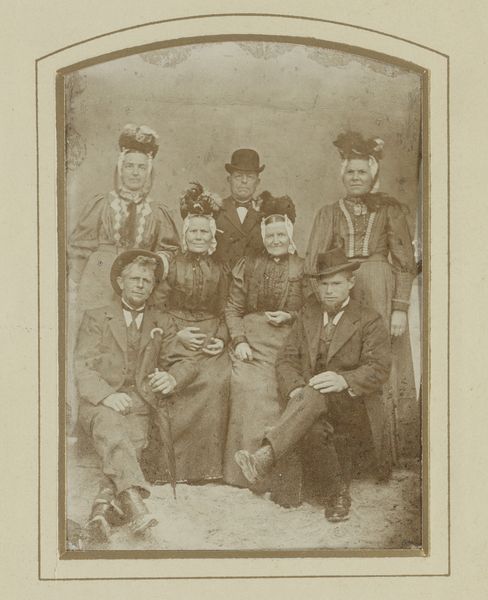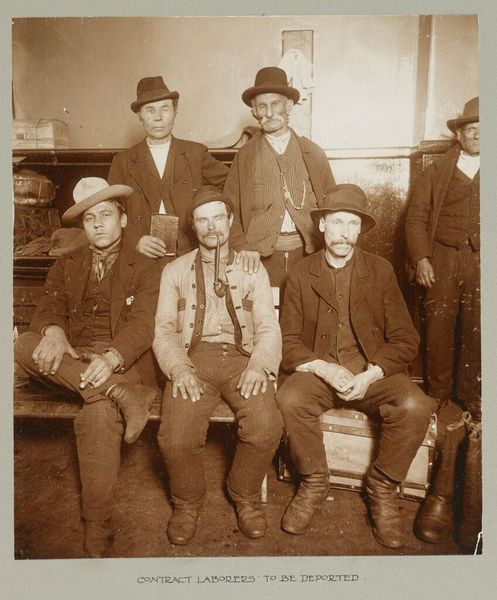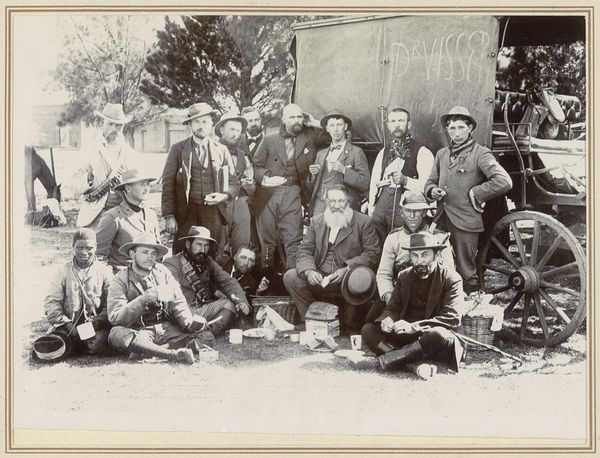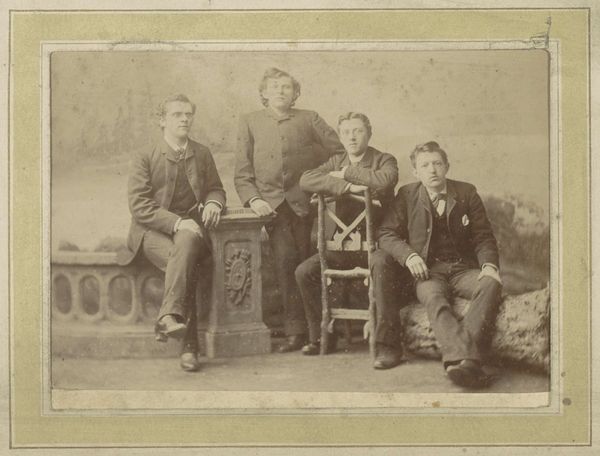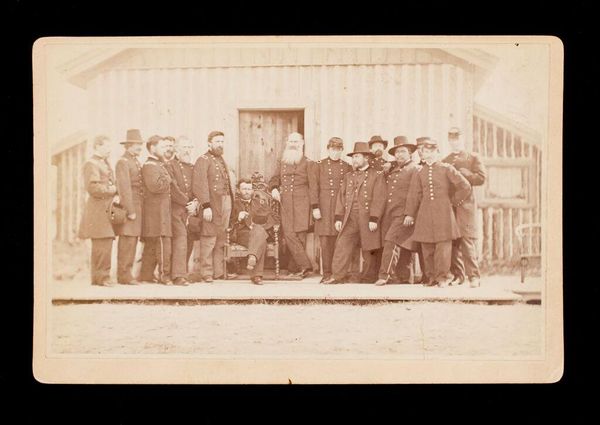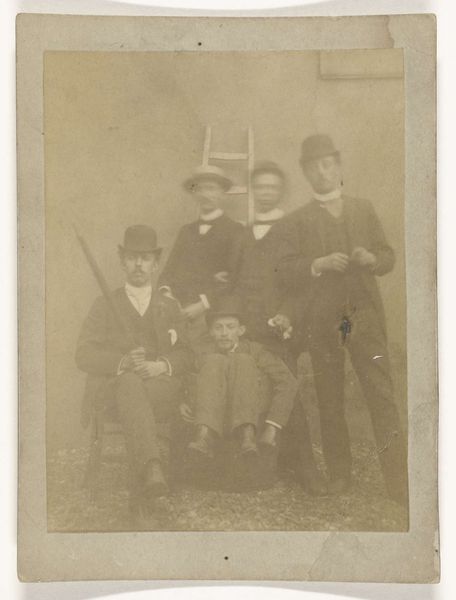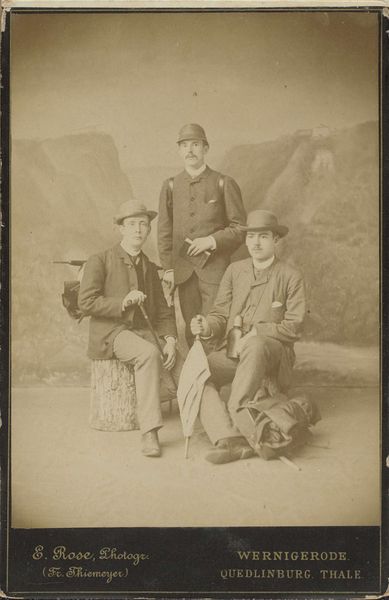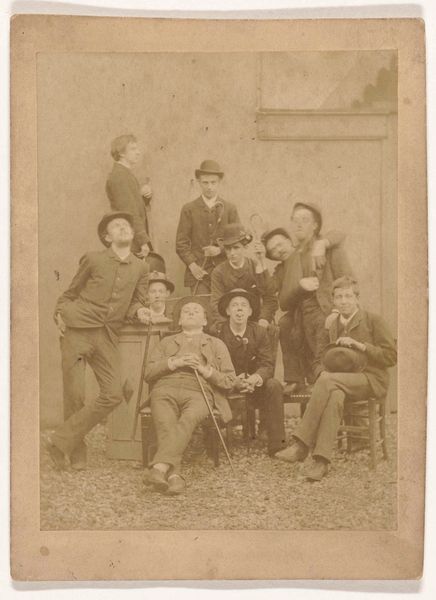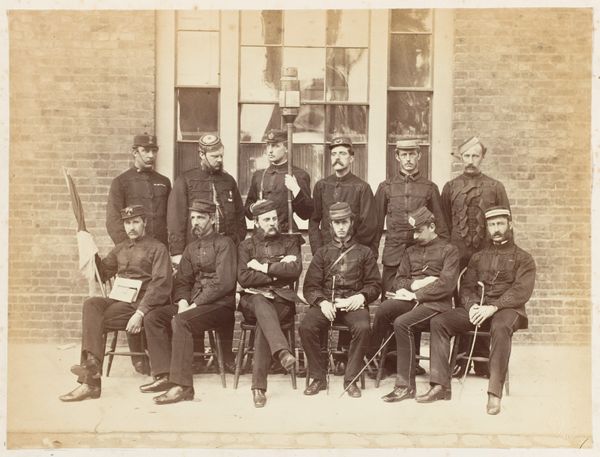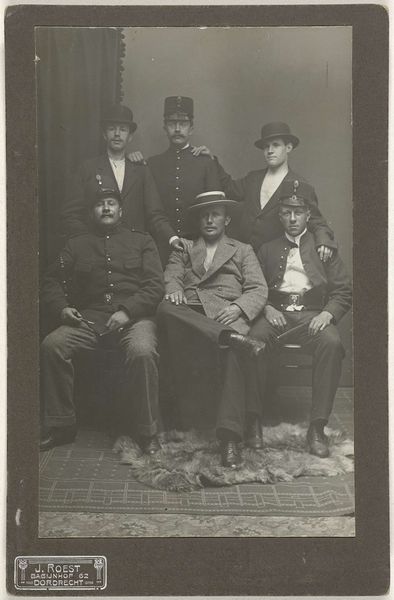
print, paper, photography, albumen-print
#
portrait
#
16_19th-century
# print
#
paper
#
photography
#
group-portraits
#
albumen-print
Dimensions: 14.1 × 9.8 cm (image); 16.5 × 10.8 cm (card)
Copyright: Public Domain
Curator: Here we have an untitled albumen print by Bonnie J. Brown, a group portrait dating from between 1866 and 1899, now held at The Art Institute of Chicago. Editor: My initial reaction is of an image steeped in the tones of its time— sepia that whispers of a bygone era. The composition, strictly formal, places the sitters in an arrangement of clear hierarchy and professional seriousness. Curator: The photograph gives us an intriguing glimpse into late 19th-century labor, wouldn't you say? Their faces seem to convey both aspiration and the weight of expectation, telling stories of working-class solidarity amidst industrial expansion and perhaps even the early inklings of labor movements. The blueprint, if it is one, suggests collective expertise and a collaborative creative effort. Editor: Absolutely. Notice the textures—the wool of the clothing, the smoothness of the backdrop, the subtle variations in tone that define the figures' volumes. Semiotically, the objects—the blueprint, the tools at the base, even the specific cuts of their suits and mustaches—signify status, expertise, and the rigorous aesthetic codes governing public presentation at that moment in time. Curator: I agree. It raises questions about who they are, what binds them together beyond their occupation. The photographic conventions of the time often erased individuality in favor of depicting subjects according to prevailing social roles, particularly of gender and class. We see that at play in the presentation here. Editor: Yes, but even within those constraints, each face offers its own minute variations in light and shadow—a complex code available for further interpretation. Consider how each man relates to the shared space of the studio and its background, which suggests the theatrical aspect of this arranged social experience. Curator: It strikes me that Bonnie J. Brown, the photographer, consciously or unconsciously, participates in the project of shaping narratives. This photo isn't merely a reflection, it's a carefully constructed piece of social documentation, imbued with complex layers of representation. What is withheld speaks as much as what's on display here, after all. Editor: That's precisely what renders the work significant—the interplay between surface appearance and concealed social meanings that activate an inquisitive dialogue with contemporary theories about class representation. Curator: Indeed, an image pregnant with social commentary. Thank you for lending your discerning insights into this historical photograph. Editor: My pleasure; a perfect moment to consider the profound ways in which formal aspects mirror the social fabric of the day.
Comments
No comments
Be the first to comment and join the conversation on the ultimate creative platform.
